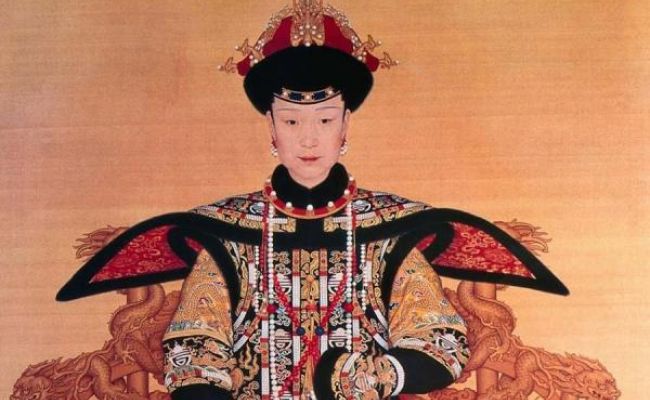The Qing Dynasty was China’s penultimate imperial dynasty, lasting from 1644 to 1912. Known for its initial prosperity and turbulent last years, the Qing Dynasty marked only the second time China was not under Han control.
The Fall of the Ming Dynasty
Near the end of the Ming Dynasty in 1616, Manchurian soldiers from northeastern Asia destroyed the Ming army and took over key cities on China’s northern border.
A full-scale invasion ensued. Emperor Shunzhi established the Qing Dynasty after defeating China in 1644. Many of the new Han subjects experienced discrimination. Han men had to cut their hair in Mongolian style or suffer execution. Many Han scholars, who attempted to criticize the rulers through literature, faced approbation and execution. Beijing’s power centers also relocated the Han people.
Emperor Kangxi
Kangxi governed for 61 years, from 1662 to 1722, the longest reign of any Chinese Emperor. He oversaw significant cultural leaps, including constructing a dictionary regarded as the best standardization of the Han language and sponsoring surveys to produce the most comprehensive maps of China to date.
Kangxi also lowered taxes and combated corruption and government excess. He enacted pro-farmer measures and halted land grabs. He dramatically reduced his staff and expenses.
Kangxi also defeated military threats, repelling three Han rebellions and conquering Taiwan. Kangxi also put an end to Tsarist Russia’s repeated invasion attempts and brokered the Treaty of Nerchinsk in 1689, bringing a large portion of Siberia under Chinese authority and allowing him to suppress rebellion in Mongolia.
Potatoes and corn, native to the Americas, were introduced as crops under Kangxi’s reign, and food was deemed bountiful at the time. Kangxi oversaw an increase in exports, mainly cotton, silk, tea, and pottery.
Emperor Qianlong
Qianlong seized the throne in 1735 and ruled China for 60 years. Qianlong was not a dynamic ruler, and his lack of interest in ruling marked his later reign.
Qianlong was primarily focused on creative endeavors. Despite his lack of talent, he published over 42,000 poems and hand-inscribed his poetry on hundreds of pieces of antique artwork in the palace.
Qianlong was equally interested in maintaining Manchu culture, and he launched dictionary and genealogy programs to achieve that goal. He also claimed that sorcerers were targeting Manchurians and devised a torture system to combat this, as well as a campaign to destroy thousands of Chinese publications that disparaged Manchurians.
Qing Dynasty Emperors – Timeline with Years
| Reign Title | Dynastic Title | Name of the Emperor | Reign Years | Burial Tomb | Remarks |
| Tianming | Qing Taizu | Nurhaci | 10 | Fuling | |
| Tiancong | Qing Taizong | Huang Taiji | 17 | Zhaoling | |
| Shunzhi | Qing Shizu | Fulin | 18 | Xiaoling | |
| Kangxi | Qing Shengzu | Xuan Ye | 61 | Jingling | the longest reigning emperor in China |
| Yongzheng | Qing Shizong | Yinzhen | 13 | Tailing | |
| Qianlong | Qing Gaozong | Hongli | 60 | Yuling | the longest living emperor in China |
| Jiaqing | Qing Renzong | Yongyan | 25 | Changling | |
| Daoguang | Qing Xuanzong | Minnin | 30 | Muling | |
| Xianfeng | Qing Renzong | Yizhu | 11 | Dingling | |
| Tongzhi | Qing Muzong | Zaichun | 13 | Huiling | Dowager Ci Xi attended to state affairs behind the throne |
| Guangxu | Qing Dezong | Zaitian | 34 | Chongling | Dowager Ci Xi attended to state affairs behind the throne |
| Xuantong | Qing Xianzong | Puyi | 3 | None | |
| Long Qing | Ming Mu Zong | Zhu Zai Ji | 6 | Zhaoling Mausoleum | Men of talent come out in succession in the court during Ming Shi Zong’s reign. |
Conservative Qing Society
During the Qing dynasty, social norms became more strict, and homosexuals faced harsher punishments. Increased demand for purity in women resulted in a widespread unwillingness by males to marry widows.
This resulted in a huge increase in widow suicides, as well as the establishment of widow homes with minimal interaction with men.
Arts of the Qing Dynasty
This conservative change had an impact on the arts, with a widespread rejection of subversive literature and stage performances. People often banned books and closed down theaters.
Despite the terrible atmosphere, some creative work garnered prominence, including Yuan Mei’s poetry and Cao Xueqin’s novel Dream of the Red Chamber.
Painting also flourished. Former Ming clan members Zhu Da and Shi Tao became monks to avoid official posts during Qing control and later became painters.
Zhu Da embraced stillness as he traveled around China, and his portrayals of nature and landscapes are full of frantic intensity.
With Impressionist-style brush strokes and presentations that predate Surrealism, Shi Tao is considered an artistic rulebreaker.
Opium Wars
The nineteenth century saw multiple military confrontations between China and the Western world, the first of which was the Opium War of 1840. It was a two-year struggle between China and Great Britain.
China had been using opium medicinally for millennia before it gained popularity as a recreational drug in the 18th century. Following the invasion of India, Britain produced and transported opium to China, inundating the country with the substance.
An addiction problem ensued. The government attempted a prohibition and outlawed the smoking of opium, but British traders worked with underground marketers to evade the restrictions.
